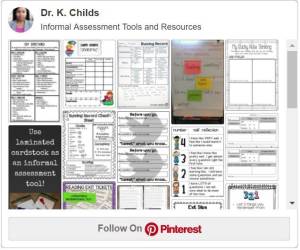If you are visiting this post, you have attended my brief lesson, “Investigating Informal Assessment” that covers the purposes of informal assessment, and how it relates to emergent and fluent literacy learners.
Objectives of the lesson
- Students will learn the various purposes of using informal assessments.
- Students will apply their knowledge of informal assessments to literacy practices using scenarios to make decisions about the instructional needs of learners.
- Students will learn key factors to consider and how to implement informal assessments when instructing emergent and fluent readers (K-3).
View the slideshow presentation below, and additional resources that provide informal assessment examples and methods, as well as resources to guide educators in using informal assessments in grade levels K-3.
Additional Resources
Overview of Informal Assessments
Examples of One-on-One Informal Assessments
Taking Running Records (Scholastic Professional Books)
Informal Reading and Writing Assessment Ideas (Scholastic)
Read2Grasp Website and App No need to use sticky notes. Helps with text coding, and informally assessing students reading comprehension (ex. Text to self, text connections).
Formative (Informal) Assessment Strategies (Boston Public Schools) An excellent list that breaks down assessment strategies.
The Ultimate List – 65 Digital Tools and Apps to Support Formative Assessment Practices A technology GOLDMINE full of digital formative (informal) assessment tools.
Scholarly Article: Formative Assessment That Truly Informs Instruction (NCTE Position Statement, 2013)
Scholarly Article: Assessment the Bridge Between Teaching and Learning (NCTE, Voices from the Middle, Vol. 21 No.3)
Dr. K. Childs Pinterest Board on Informal Assessment



